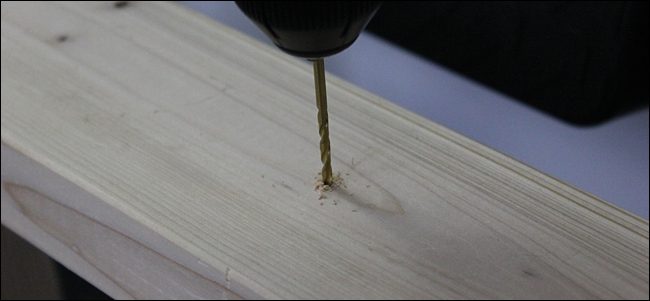
If you’re hanging shelves or mounting anything heavy to the wall, you’ll probably want to mount it directly to the wall studs. However, you should be drilling pilot holes first before driving in any screws.
If you’ve ever assembled Ikea furniture, then you’ve probably noticed those little holes where all of the screws are supposed to go in, but they’re not just reference points.
Those holes are called pilot holes, and they prevent the wood from splitting and cracking when the screws are driven in, among a few other benefits.Why Pilot Holes Are Necessary
When you drive screws into wood without drilling pilot holes, you’re essentially pushing wood out of the way to make room for the screw. That displaced wood puts more pressure on the wood surrounding the screw, which can lead to splitting and cracking, weakening the wood over time.

This is especially the case for certain types of wood. Oak, for example, has a more complex structure than a cheaper wood like pine. So not only is it more difficult to drive in screws into oak without pilot holes, but the chance of splitting the wood is greater. With pine, drilling pilot holes isn’t as important, because it can handle the expansion a bit better than oak can.
However, that’s not to say that you don’t need to drill pilot holes into pine, but it’s a bit more forgiving when it comes to this.
In any case, pilot holes are still great to have for several other reasons. First off, drilling a pilot hole not only guides the screw into the hole with ease, but it’s a lot easier to drive in a screw, whether you’re using a power drill or a screwdriver. Without a pilot hole, it would be a huge chore to try and drive in a screw using a screwdriver, and you’d have to apply a lot of force when using a…
The post Why You Should Drill Pilot Holes Before Screwing Into Wood appeared first on FeedBox.